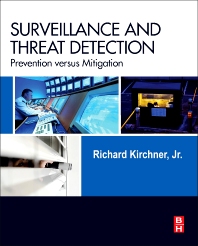Petro Canada (now Suncor), an integrated energy company based in Ontario, Canada, was in the market for a CCTV system. The company needed the surveillance system to monitor its valves, which open and close gas flow (EH&S). The system also needed to provide general fence line and gate security.
A significant challenge was that the site spanned 380 acres with piping and buildings that could block line-of-site transmission. A dock at the water front approximately two miles away also required monitoring from its control center. In addition, the site had rail lines that needed to be monitored while filling the tanker rail cars. Cabling the site for camera transmission would have been cost prohibitive.
Given the characteristics of the site, a wireless network from Fluidmesh, Boston, was deployed. Electrical trenching got underway to get the power to poles and other strategic camera locations.
The integrator on the project was KM Enterprise Solutions (KMES). Established in 1978 and now part of the Chubb Security Systems family, KMES focuses on integrating advanced security technologies including video, intrusion detection and access control. KMES and Chubb are also part of UTC Fire & Security, a United Technologies Corp. business unit.
As part of the project, 32 cameras and 50 Fluidmesh 2200 dual-radio nodes were deployed. The wireless network runs on the 5.1-5.8 GHz range using patch antennas to provide better range and reduce interference. The network is a combination of mesh and point-to-multipoint architecture, depending on line of sight and camera locations.
KMES turned to Fluidmesh technology because of the products’ flexibility to transmit multiple camera streams across long distances and because of the reliability of its optimized transmission system. A Fluidmesh network was also deployed to send multiple camera signals from the dock area over a VPN to the south end of the site.
High resolution video streaming over a mesh network presents several technical challenges: bandwidth is always scarce when dealing with high resolution video and a multi-hop transmission may decrease usable bandwidth and increase delay. For example, a video packet that goes through three hops absorbs three times the bandwidth compared to a video packet that is only one hop away from its destination.
However, advanced mesh products solve these challenges by operating multiple radios at the same time. In this way, the video stream can use many different channels to create high-bandwidth and low-delay paths. Operating multiple radios allows the system to increase the bandwidth by spreading the transmissions on multiple non-overlapping channels but also to decrease the delay of the network. At every hop the packets go through, the mesh transmitter can choose the best frequency to reach the following node, therefore optimizing not only the path but the frequency spectrum usage as well.
Pat Jeffrey, sales consultant for KMES, pointed out that Fluidmesh was a natural choice for this installation. “Fluidmesh allows for redundancy throughout the network and can easily handle transmission of multiple cameras,” Jeffrey said. “Although KMES had never worked with Fluidmesh before, the technicians were able to easily get up to speed after attending the online training. Our technicians also received ongoing telephone support during the configuration and deployment of the system. The client has found the system to be very reliable and it is serving their needs exactly as they’d hoped for,” Jeffrey added.
Reliability and flexibility are intrinsic benefits of mesh architecture. Unpredictable sources of interference do not need to be predicted: the network will identify the position of the source of interference and start routing packets around low-quality links. Airports and seaports are typical locations where mesh architecture solves several problems at once. Airplanes taxiing on the ground are often unpredictable and moveable sources of interference. During the design and the installation of a mesh-based CCTV system, it won’t be required to identify every possible position where an airplane can be interfering in the video streaming quality. The mesh network itself will find alternative paths in case some of the links are not usable due to interference. Similarly, using traditional wireless technology in commercial seaports is very challenging because loaded container ships can act as “moving buildings,” making the design of a traditional static wireless network almost impossible. However, using a mesh-based architecture, video streams will change their path in case a container ship docks in the middle of a wireless link, impeding transmission through that particular path. The transmitter will always have an alternative to reach the base station.
Cosimo Malesci, vice president of marketing at Fluidmesh added, “Industrial sites present numerous challenges from a data infrastructure point of view.
Trenching and running cables is extremely hard and expensive. In addition, most of these sites cannot afford to be shut down during the installation phase due to the operations of the site. A wireless network allows the customer to deploy an infrastructure at a fraction of the cost and in a much shorter time span compared to running cables or fiber. In addition, the network can be easily expanded or modified, in case the needs of the plant change over time. Once a Fluidmesh network is in place, most industrial sites end up using it for other communication needs as well such as VoIP, emergency phones and SCADA.
“Given the bandwidth the system can provide, these services can easily coexist with the video surveillance system, leading to a higher return on investment for the customer,” Malesci said.




